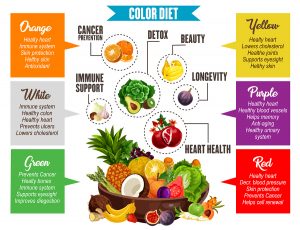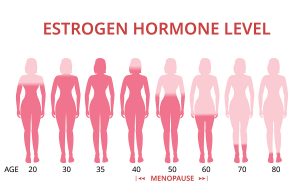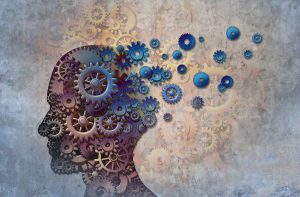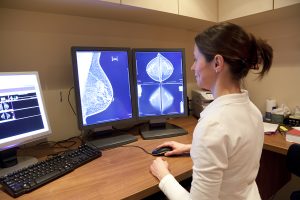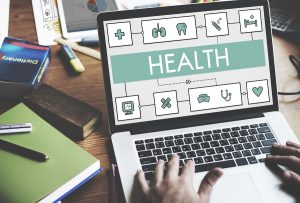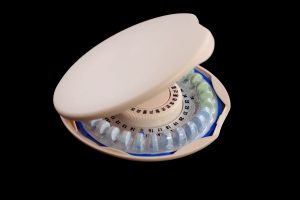New research showed that the breast cancer risk persists after hormone replacement therapy (HRT). This is described in this CNN article. It is common knowledge for some time that female patients who use synthetic hormones as hormone replacement in menopause, have a 1.6-fold to 1.8-fold risk to develop breast cancer. However, since the abrupt ending of the Women’s Health Initiative (WHI) in 2002 the truth about the risks of HRT became known and made HRT more confusing. After all, in this trial they wanted to show once and for all that HRT would be beneficial. The expectation was that HRT would prevent osteoporosis, heart attacks and breast cancer. But the results were quite different. Instead the study found a 41% increase in strokes, 29% increase in heart attacks, 26% increase in breast cancer, 22% increase in total cardiovascular disease and a doubling in the risk for blood clots.
Missing information about synthetic hormones
What the authors of the study did not explain was the fact that it was the properties of the synthetic hormones, progestagen and Premarin, that were responsible for the negative effects. Had researchers insisted to perform the study with bioidentical hormones, the results would have been quite the opposite! With bioidentical hormone replacement we see the prevention of heart attacks and clots; cancer rates are lower than controls, and the prevention of osteoporosis is another benefit. The end result is a reduction in mortality rates. These horrifying results from the use of synthetic hormones still frighten many women. This is particularly so when it comes to replacing hormones after menopause.
Breast cancer risk study with HRT in more details
The research study described in the CNN article is based on a more comprehensive Lancet study. The researchers did a Meta analysis of 58 prospective studies. Unfortunately all the hormones given were synthetic hormones (not bioidentical ones) that had the same configuration as in the WHI. On average women became menopausal at age 50. This is when the physicians commenced HRT. The prospective follow-up showed that 108,647 postmenopausal women developed breast cancer around the age of 65. 55,575 women (51%) had used HRT. Postmenopausal women who used estrogen/progestagen combinations during years 1–4 had a relative risk of 1.60-fold to develop breast cancer. This risk increased during years 5–14 after exposure to estrogen/progestagen with a relative risk of 2.08-fold to develop breast cancer.
More details about breast cancer risks
The risk of developing breast cancer was lower when women took estrogen only as a form of HRT. For years 1-4 the relative breast cancer risk for patients on estrogen alone was only 1.17-fold. Regarding years 5-14 with estrogen-alone replacement the breast cancer risk was 1.33-fold.
Women of average weight who started their HRT of estrogen/progestagen pills at age 50 with menopause one woman in 50 users developed breast cancer between the ages of 50 and 69. In women who used estrogen regularly, but progestagen only irregularly, one in 70 users developed breast cancer. For estrogen only users one in every 200 women developed breast cancer.
Discussion of the above results
Dr. Wright and Dr. John Lee have pointed out years ago that there are alternatives to taking synthetic hormones as HRT. Taking oral synthetic hormone preparations is problematical. First, the pharmaceutical company attached chemical side chains to the synthetic hormones. The women’s estrogen receptors recognize the synthetic hormones only partially. Hormone researchers developed progestagen to mimic a woman’s progesterone. But it turns out that the estrogen receptors read progestagens like an estrogen. This is the reason why there are higher breast cancer rates with the combination of estrogen/progestagen than estrogen alone. Secondly, there is a problem of estrogen dominance, which causes a higher likelihood that the patient develops breast cancer or heart attacks.
Avoiding estrogen dominance reduces breast cancer risk
If estrogen is balanced with progesterone, the cancer promoting effect of estrogen is counterbalanced, and the women on bioidentical hormone replacement are protected from the serious side effects women of the WHI had to endure.
Bioidentical estrogen applications are available through creams that women apply to the skin. This avoids the problem of the first-pass effect; if estrogens are absorbed from a pill in the gut they have to pass through the liver, which is the organ that metabolizes them.
Bioidentical hormone replacement as an alternative to HRT
In Europe there has been a strong resistance to using synthetic hormones. As a result long-term studies were able to show that there is no danger when bioidentical hormone replacements therapy uses creams that are applied to the skin or intravaginally. This avoids the first-pass effect in the liver, as is the case with synthetic estrogens and progestagens taken orally as pills.
John Lee stated that physicians should measure hormones and identify those women who are truly hormone deficient. These are the ones who need hormone replacement. However, physicians should use only bioidentical hormones in a hormone replacement therapy. And they should also replace only as much as necessary to normalize the hormone levels. This is also the level where postmenopausal symptoms disappear. Dr. Lee noted: “A 10-year French study of HRT using a low-dose estradiol patch plus oral progesterone shows no increased risk of breast cancer, strokes or heart attacks”.
How is bioidentical hormone replacement done?
The best method is usually a bioidentical hormone cream application to the forearms or to the chest wall once per day. A woman on bioidentical hormone replacement applies bioidentical Bi-Est cream and progesterone cream to the skin of her forearms or chest wall. The hormones get directly absorbed into the blood stream and can do their job without interference. The treating physician can prescribe different amounts of the bioidentical hormones depending on saliva tests or blood tests. 1 or 2 months later repeat blood or saliva tests can follow to verify that the amounts of the replacement hormones and their absorption are adequate for the patient’s need.
Difficulties to measure progesterone levels
Dr. David Zava, PhD gave a talk on breast cancer risks. This was a presentation at the 24th Annual World Congress on Anti-Aging Medicine (Dec. 9-11, 2016) in Las Vegas that I attended. Dr. Zava, who runs the ZRT laboratory, spent some time to explain how to measure progesterone in a physiological way.
Blood (serum) progesterone levels do not adequately reflect what the hormone tissue level is like in a woman’s breasts. On the other hand saliva hormone levels are giving an accurate account of what breast tissue levels are like.
Progesterone blood levels versus progesterone tissues levels
Dr. Zava gave an example of a woman who received an application of 30 mg of topical progesterone. Next, laboratory tests observed hourly progesterone levels in serum and saliva. The serum progesterone levels remained at around 2 ng/ml, while the saliva progesterone levels peaked 3 to 5 hours after the application. It reached 16 ng/ml in saliva, which also represents the breast tissue progesterone level. Dr. Zava said that the important lesson to learn from this is not to trust blood progesterone levels. Too many physicians fall into this trap and order too much progesterone cream based on a misleading low blood test. This leads to overdosing progesterone. With salivary progesterone levels it is possible to see the physiological tissue levels, which is impossible with blood tests. Dr. Zava emphasized that testing blood or urine as progesterone hormone tests will underestimate bio-potency and lead to overdosing the patient.
Conclusion
A new Meta analysis of 58 prospective studies with a large amount of participants showed that standard hormone replacement therapy (HRT) for postmenopausal women causes breast cancer. Postmenopausal women who used estrogen/progestagen combinations during years 1–4 after menopause had a relative risk of 1.60-fold to develop breast cancer. This risk increased during years 5–14 after exposure to estrogen/progestagen with a relative risk of 2.08-fold to develop breast cancer. Unfortunately all of the patients had received the standard Premarin estrogen and synthetic progestagen combination. The body’s estrogen receptors read both of these synthetic hormones as estrogen, which led to estrogen dominance. Estrogen dominance (with missing natural progesterone) is known to cause breast cancer.
Comments and discussion of bioidentical hormone replacement (BHRT)
I have explained in my comment that the investigators should have used bioidentical hormone replacement therapy (BHRT) instead of making a similar mistake as in the Women’s Health Initiative, where synthetic hormones caused cancer, heart attacks and blood clots.
Bioidentical hormone replacement is started with progesterone creams first in order to avoid estrogen dominance. After hormone tests estrogen is gradually introduced as Bi-Est cream applied to the skin and balanced with the progesterone. The physician orders blood estrogen levels and progesterone saliva hormone tests from time to time to monitor the hormone levels. No cancer occurs with bioidentical hormone replacement. It also protects from osteoporosis, heart attacks and strokes.
Part of this blog was published here before.

